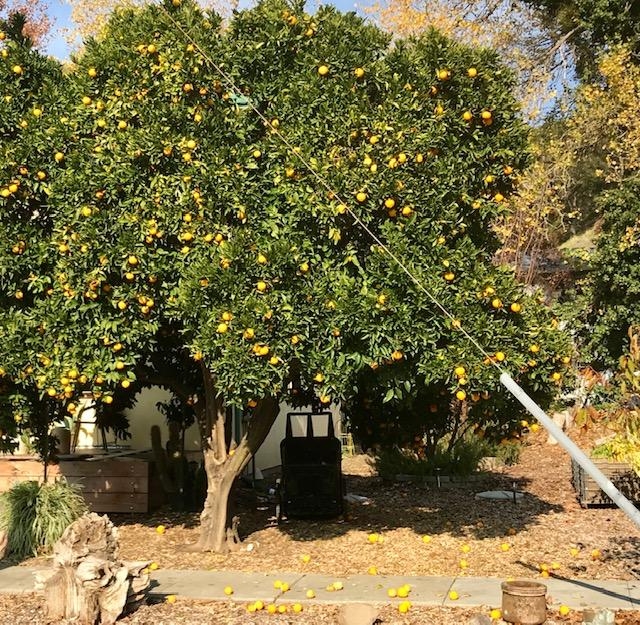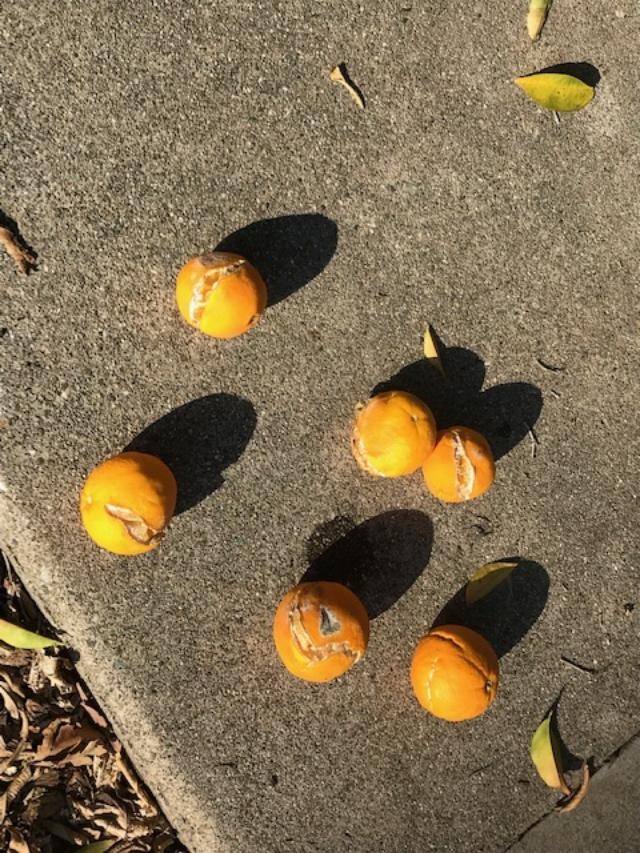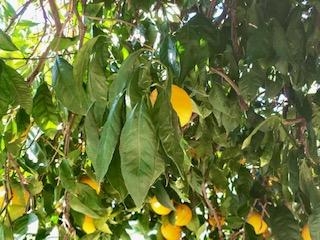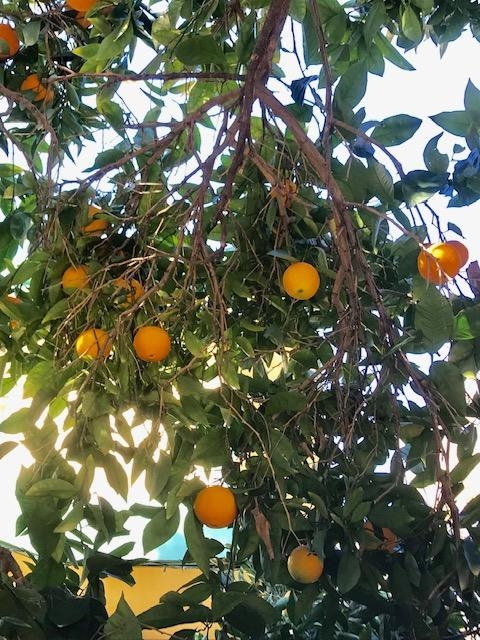Advice for the Home Gardener from the Help Desk of the
UC Master Gardener Program of Contra Costa County
Client's Request via email (preceded by telephone conversation at 925- 608-6683).
Thanks for your interest in our distressed navel orange tree. Here is the information you requested from our phone conversation and some photos. My 60 - 80 (?) year old orange tree has, for the three years we have lived here, regularly produced abundant crops of many hundreds of exceptionally delicious fruit each year, February - June.
In the last four weeks it has been dropping oranges at an increasing rate, by now many dozens a day, totaling over 300.
It is over two stories tall and grows in Martinez, California, in a moderate climate with hot summers and cool winters.
As you can see from the photos, the fruit is splitting, leaves are drooping, the canopy is diminishing, and a few clusters of branches have died. There is a tree nearby of the same age and size that does not appear to have any problem at all.
Our tree has not been watered regularly during the dry season, whereas the neighboring tree is surrounded by a watered lawn.
It was given a fertilization of nitrogen last year, and we wonder if this, or the lack of watering, could be the cause.
What can we do to save this magnificent tree?




MGCC Help Desk Response: Thank you for contacting the UC Master Gardener Program Help Desk with your primary issue that your orange tree's fruit splitting and also the leaves are drooping and turning over
Splitting citrus fruit is a common problem, especially with navel oranges. The following link (http://anrcatalog.ucanr.edu/pdf/8038.pdf) is a short 1-1/2 page informative UC document which describes the condition, along with suggestions for resolution.
Very briefly, fruit splitting is likely the result of stress to the tree, and is probably related to extreme fluctuations in temperature, humidity, soil moisture, and possibly fertilizer levels. The disorder is often caused by a combination of these factors rather than by a single cause.
Avoiding fluctuations in soil moisture (I suggest adding mulch under the tree canopy and consistent and ample water, especially during heat spells) as well as fertilizer levels throughout the growing season may help to minimize fruit split.
I believe the leaf drooping and turning over are also symptoms of too little water during the hot season. The dropping of leaves and resulting thinning of canopy often are the result of too little water on both fruit and ornamental trees.
I am also including some additional links which will provide information on growing healthy citrus here in Contra Costa County. In particular take a look at the 2nd link below as that will provide you with assistance on watering and fertilizing.
//ucanr.edu/blogs/slomggarden/blogfiles/4260.pdf
http://homeorchard.ucanr.edu/Fruits_&_Nuts/Citrus/
Please let us know if you have any additional questions!
Help Desk of the UC Master Gardener Program of Contra Costa County (EDC)
Note: UC Master Gardeners Program of Contra Costa's Help Desk is available almost year-round to answer your gardening questions. Except for a few holidays (e.g., last 2 weeks December), we're open every week, Monday through Thursday for walk-ins from 9:00 am to Noon at 2380 Bisso Lane, Concord, CA 94520. We can also be reached via telephone: (925) 608-6683, email: ccmg@ucanr.edu, or on the web at http://ccmg.ucanr.edu/Ask_Us/. MGCC Blogs can be found at http://ccmg.ignore.edu/HortCoCo/ You can also subscribe to the Blog.